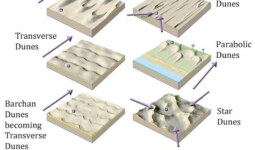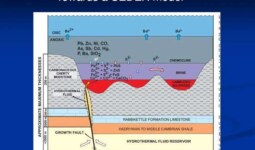An unconformity is a surface of erosion or non-deposition that separates two rock units that have different ages. It represents a time gap in the geologic record, and it occurs when sedimentary rocks are tilted, uplifted, and eroded before new sediment is deposited on top of them.
There are three types of unconformities:
Disconformities
A disconformity is a type of unconformity that separates rocks of the same age, but that were deposited at different times. Disconformities are commonly found in sedimentary rock sequences, where they can be used to infer changes in sea level or the timing of tectonic events. Disconformities are formed when sedimentary rocks are uplifted and exposed to erosion, and then later re-covered by new sediment. The sedimentary layers above and below the disconformity will be parallel to one another, but there will be a gap in the rock record between the two layers. Disconformities are important in geology because they can provide clues about the history of the Earth and the processes that have shaped it.
Nonconformities
A nonconformity is a type of unconformity in which sedimentary rocks are deposited on top of igneous or metamorphic rocks. Nonconformities represent a significant time gap in the geologic record, and they can be used to infer major changes in the Earth’s environment or tectonic activity. Nonconformities are formed when sedimentary rocks are deposited on top of pre-existing rocks that have been uplifted and exposed to weathering and erosion. The pre-existing rocks are often much older than the sedimentary rocks that cover them, and they may have undergone significant changes due to heat and pressure. Nonconformities are important in geology because they provide evidence of the Earth’s geologic history and the processes that have shaped it
Paraconformities
A paraconformity is a type of unconformity in which the rocks on either side of the surface are parallel, but there is a time gap in the rock record. Paraconformities are commonly found in sedimentary rock sequences, and they are usually the result of slight tilting or uplift of the rocks, followed by a period of erosion. The sedimentary layers above and below the paraconformity will be parallel to one another, but there will be a gap in the rock record between the two layers. Paraconformities are important in geology because they can provide clues about the history of the Earth and the processes that have shaped it. They can also be used to infer changes in sea level or tectonic activity.




Leave a comment